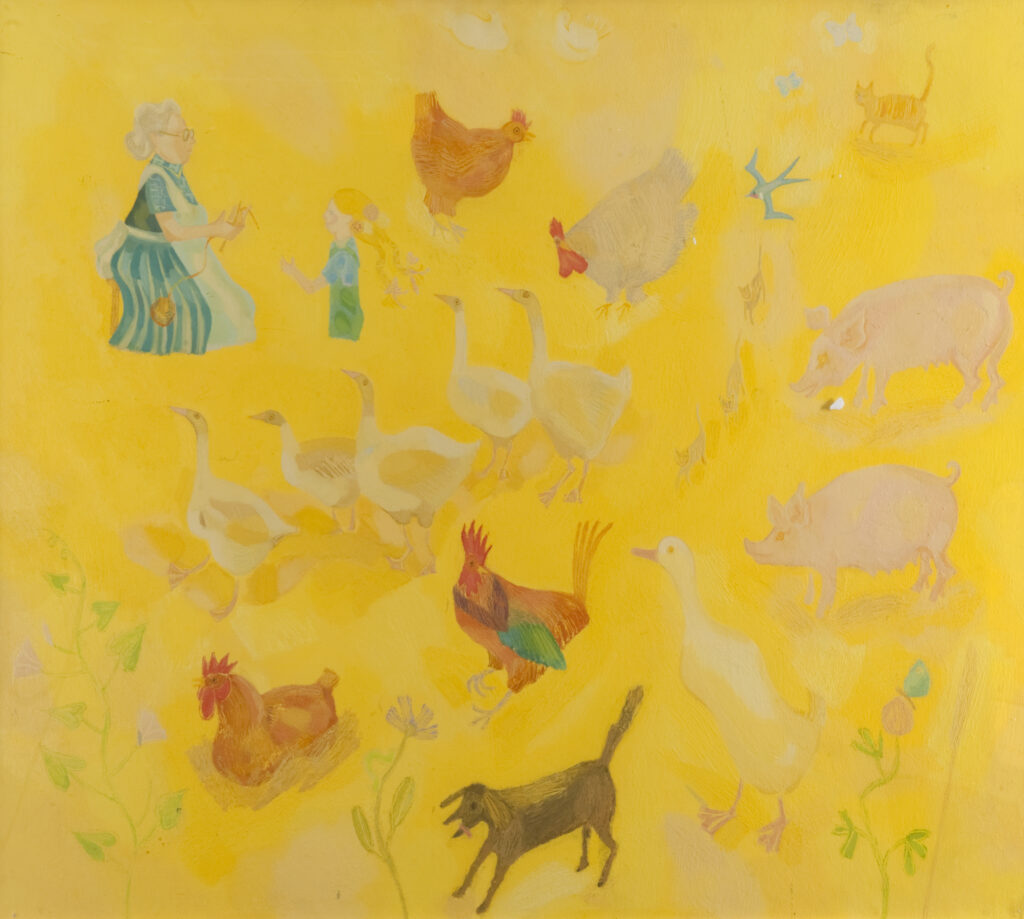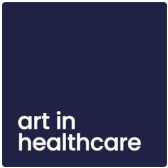I recently had the privilege of working alongside the Art in Healthcare team across 6 weeks as part of my work placement opportunity offered by Edinburgh University.
As a Fine Art student studying both art practice and history, I am particularly interested in the burgeoning body of research affirming the relationship between Art and health and wellbeing. The benefits of both creating and experiencing art have proven to help reduce sickness, anxiety and stress but also harbour spaces for community. Research on how art can prove vital to the healthcare experience has seen art initiatives become standard practice in the construction and planning of new and refurbished hospitals. This research will only grow as the blossoming field becomes further recognised and fossilised into healthcare routine practice. So, I leapt at the opportunity to work with an organisation specialising in both running art workshops and providing a rich collection of art to healthcare organisations across Scotland.
Through this work placement, I acquired a wealth of knowledge on how Art in Healthcare’s workshops not only provided a rich, considered art programme but extended beyond the workshop – igniting people’s passion for art and providing a safe space for shared reflection and connection. I joined in on making clay sculptures, managed to draw in the style of Eduardo Paolozzi and was encourage to create without boundaries when experimenting with continuous line drawings.
The diversity of Art in Healthcare’s collection was utilised across the workshops offered. For example, in the ‘Coorie In’ workshop with artist, Katie Temple we took inspiration from David Mitchie’s Poppy Head’s which provided copious creative prompts and ideas. From Mitchie’s use of a restrained, more simplistic palette- to the consideration of how shading can be sometimes better than hard lines when constructing an image. I found myself taking ideas from the workshops outside and into my own art practice, specifically my newfound appreciation of clay.
In addition to joining workshops, I spent time with Margaret McCormick, Art in Healthcare’s curator who generously shared the many considerations one has to make when placing art into healthcare settings. To the complexities of placing works during COVID-19 to communicating with healthcare professionals across Scotland got a fuller scope of what goes into curating for such complex environments. I got to see the collection in person – looking at works from Barbara Rae to Victoria Crowe.
My favourite work in the collection must be Emily Learmont’s, Grandmother and the Farmer’s Daughter (2000) which I saw on show at Art in Healthcare’s Stories of the Collection exhibition. This work was originally commissioned for Art in Healthcare’s Children’s Project wherein Learmont worked alongside a group of children in a hospital to assess what type of work they would like to see. In response, they requested more yellow in the hospital and consequently, this work is bursting with a spectrum of golden, vibrant shades of yellow that seem to seep through the gaggle of farm animals that scamper across the frame. In the corner of the piece, we can see a grandmother who tenderly passes her granddaughter her knitting, which tenderly orchestrates a narrative of serene tranquillity. Perhaps this is my favourite work because we get such a sense of character from all the animals. For example, the little brown dog, whose tongue hangs loosely out its mouth seems to alert the chicken who leaps and bounces across the frame. The dignified group of geese walk pridefully as they hold their heads high. Alas, they are unafraid of the slick group of kittens who slip in front of the rather confused-looking pigs. It’s easy for one to feel absorbed in the scene as our eyes traverse this dynamic composition. Above all, this work is exemplary of Learmont’s admiration of colour and should be seen as a celebration of the joy of yellow.

Above image: Emily Learmont’s “Grandmother and the Farmer’s Daughter”, Oil on Board, 2000
Following my time with Art in Healthcare, and thanks to the support of all the staff who so generously took their time to explain their work to me; my research has been enriched with a unique comprehension on how contemporary approaches to unite art with health and wellbeing.
To learn more about the benefits of art to health and wellbeing I suggest these readings and reports:
3 April 2024 by
Amy Miles
